Volcanoes are not the only things erupting in Iceland. The island boasts between 20-29 active geysers across Iceland. They are all spewing its hot water into the air and creating the perfect photo opp if you manage to catch it on time. In this article, we take a look at the one that started it all; the Great Geysir.
Learn how these magnificent displays of water work, how to visit the most spectacular active geyser on the island, and the rich history behind it.
What is a Geyser?
A geyser is a special type of hot spring that ejects hot water and steam intermittently. Essentially, it’s the water version of a volcano. Geysers need very specific conditions to exist. That's why there are only a few places in the world that offers visitors the wonderful experience of seeing this phenomenon. One of these places and the first ever to discover this phenomenon is Iceland.
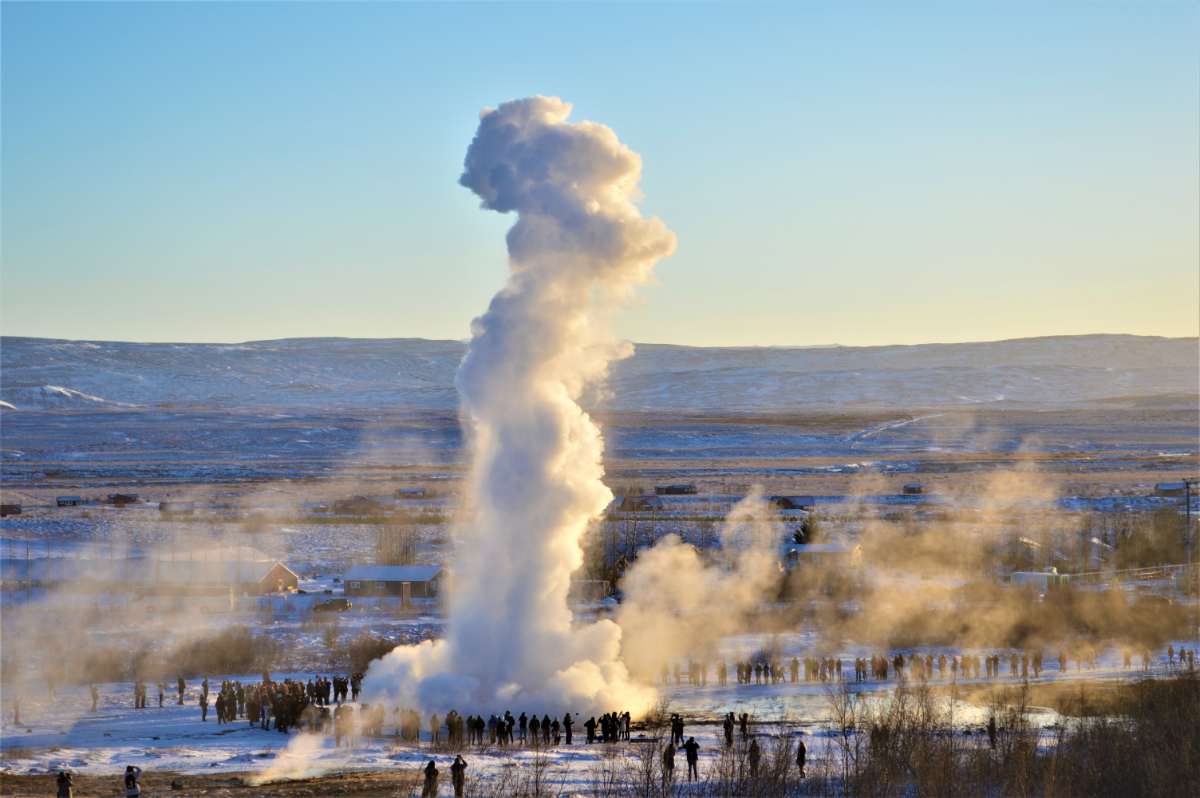
The Great Geysir
The first-ever geyser to be discovered in Europe was the Great Geysir in Iceland. In fact, its name is the very reason we refer to these water displays as geysers in general. The Great Geysir is believed to have been active for ten millennia, with the earliest mentions of it being found in the late 13th century.
The Great Geysir is definitely called “great” for a reason. This powerful geyser is 20 m deep, and 18 m wide, spouts out 1.5 l/s during an eruption, and has been known to blast water up to 60 m into the air.
Blowing volumes of water into the air is not the only impressive thing a Geysir in Iceland can do. Let's not forget about the fact that the water in Geysir is also an absolutely scorching 125 degrees Celsius!
How often does Geysir erupt?
They are often surprised at the answer. In 1910 Geysir would have eruptions almost every 30 minutes. Today, although the geyser is still officially active, its eruptions are very infrequent.
Just keep in mind that this can change at any time, especially after geological events such as earthquakes. It is quite fitting that earthquakes that are credited for creating a couple of geysers in the area, including Geysir, are what jumpstart these beauties back to life.
Currently, many visitors opt to visit the Great Geysir as an origin story and ode to all geysers out there. Then pop around to its sister Geyser, Stokkur, to capture some live eruption action. Stokkur is just 100 m from Geysir and erupts roughly every 5-10 minutes.
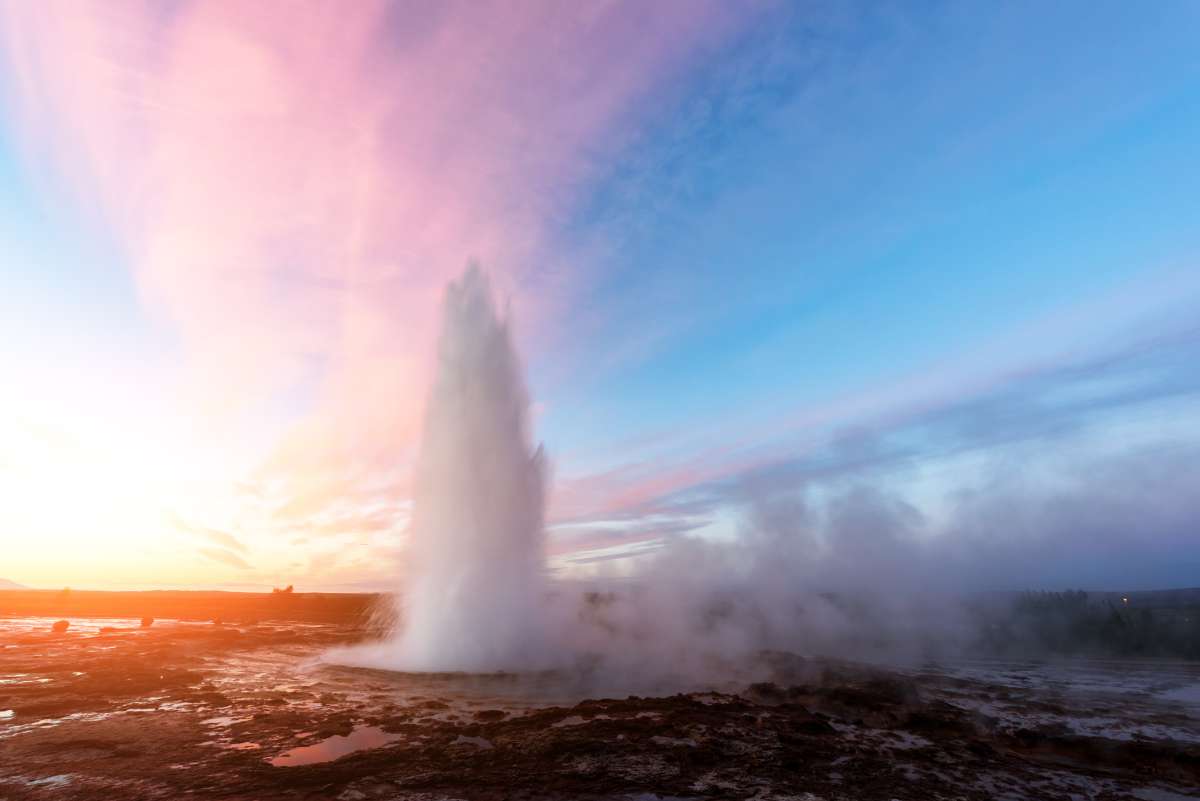
How to Get to Geysir
The Great Geysir can be found in the Haukadalur valley in the South of Iceland. There are quite a few ways to get to Geysir that includes:
- Making it one of the stops on your road trip itinerary whilst doing the Golden Circle route.
- Book a spot on a guided tour or one of the popular Iceland photography tours (just ensure that it includes transport from wherever you’re at).
- Rent a car in Reykjavík and make a day outing out of it from the capital (it’s just a 1.5-hour drive).
Entry to the geothermal area is completely free of charge. The private owner, Sigurdur Jonasson, gifted the thermal field to the Icelandic people and it has been in public ownership ever since.
Geysir is open all year round and as there is no gate that closes, it can technically be visited 24/7. But there are no light sources, so you should probably opt for daylight if you actually want to see Geysir.
Many prefer to visit the area during the winter months. No wonder why, since the frosty scenery in contrast to the boiling hot steam and water is a visual representation of the Land of Fire and Ice. But if you are planning to visit during the busy summer months, just ensure that you come before 10 am to avoid the crowds.
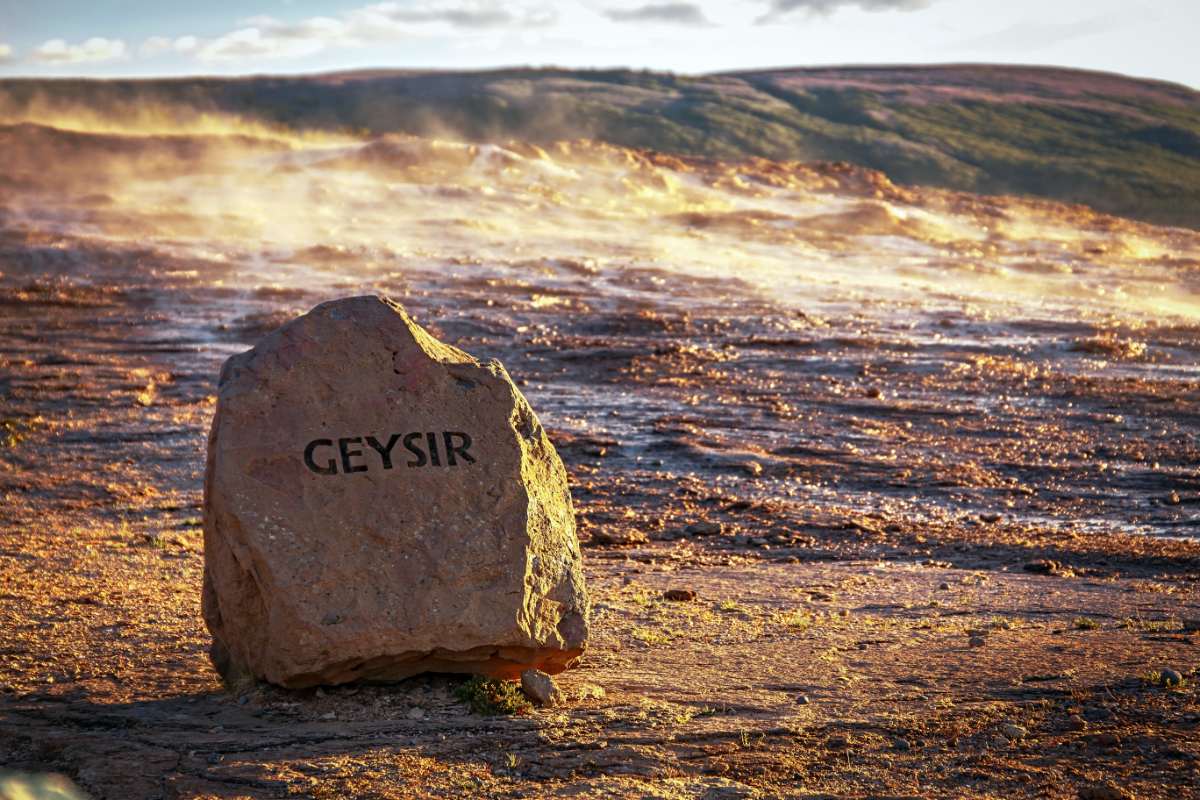
What You Can Find On-site
As one of the major attractions on the island, the site offers plenty of facilities and amenities for visitors. These include:
- Car parks
- Toilets
- Shops
- Restaurants
- Accommodation
Safety Tips When Visiting the Geysir Geothermal Area
Visiting Geysir can be very exciting, and we all tend to lose a bit of our self-preservation when we’re on holiday. But you need to keep the following safety measures in mind when visiting the Geysir hot spring and geothermal area. Otherwise, your happy holiday memories might go up in smok… we mean steam:
- Always ensure that you keep a safe distance from Geysir and its fellow geysers.
- Know the signs of an eruption: the water starts to boil, so you will see bubbles, and then it will seem like the water slightly retracts before it blows.
- Stay within all barriers and on marked pathways.
- Keep a close eye on children and do not let them wander around by themselves.
- Do not throw things into Geysir or the other geysers in the area.
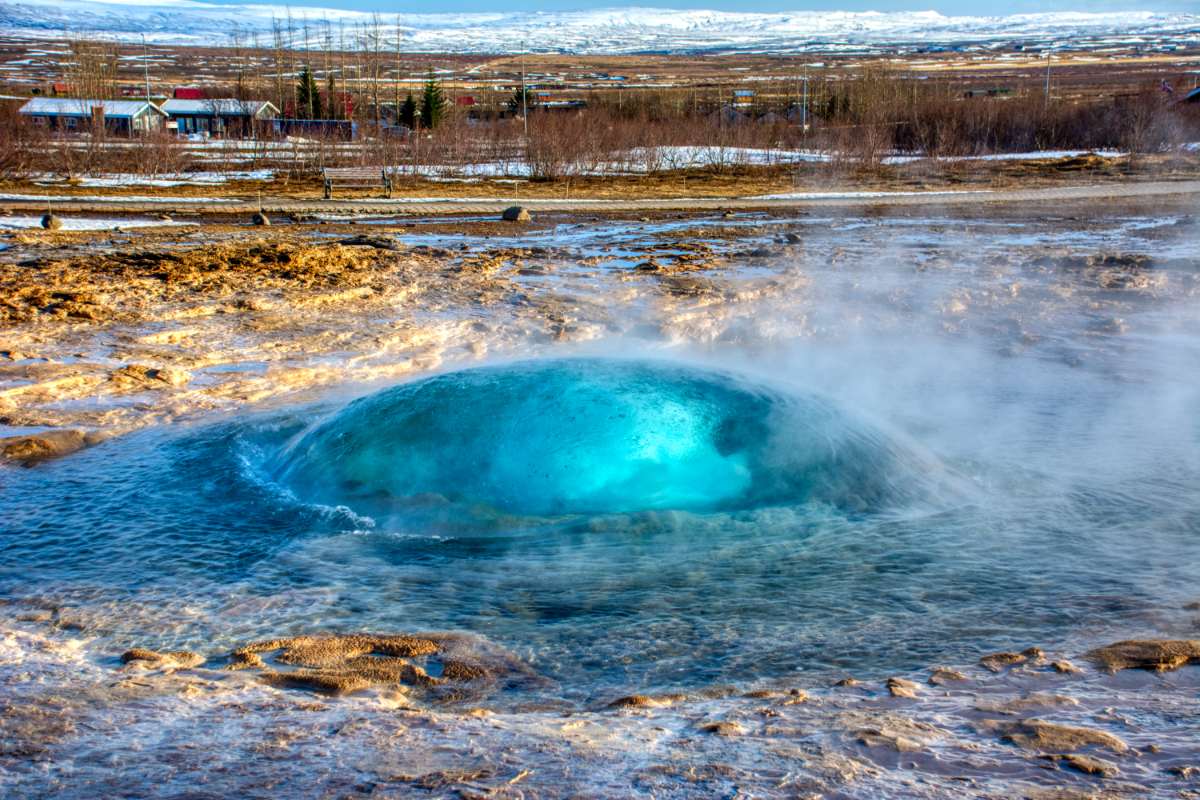
Interesting Geysir Facts
The following are a few interesting facts and incidents around Geysir that you might not know about:
- The word “geyser” in Icelandic directly translates to “gusher”. Pretty fitting, don’t you think?
- Ed Sheeran was one of the visitors who did not heed the safety warnings. He ventured off the main path and soon plunged his foot into a boiling mud pot. As you can imagine, his foot was severely burned, and he had to be air-lifted to the hospital. Today, he is still the same singing sensation he has always been, but has the scars as proof of why you shouldn’t be playing around at Geysir.
- Geysir has actually been inactive once before. In 1916 eruptions stopped abruptly and only got woken up due to a man-made channel being dug around its vent.
- Once the sleeping giant was woken up again, someone figured out that eruptions can be controlled by using soap. It was stimulated to erupt for particularly special occasions and was truly a magnificent sight. But when we know better, we can do better, and the soap addition held great environmental concerns, so the use thereof was kept at a minimum.
- Does something smell like rotten eggs? Take a look around. If you see any yellow stains on the ground, you are looking at the culprit: crystallized sulfuric gas.
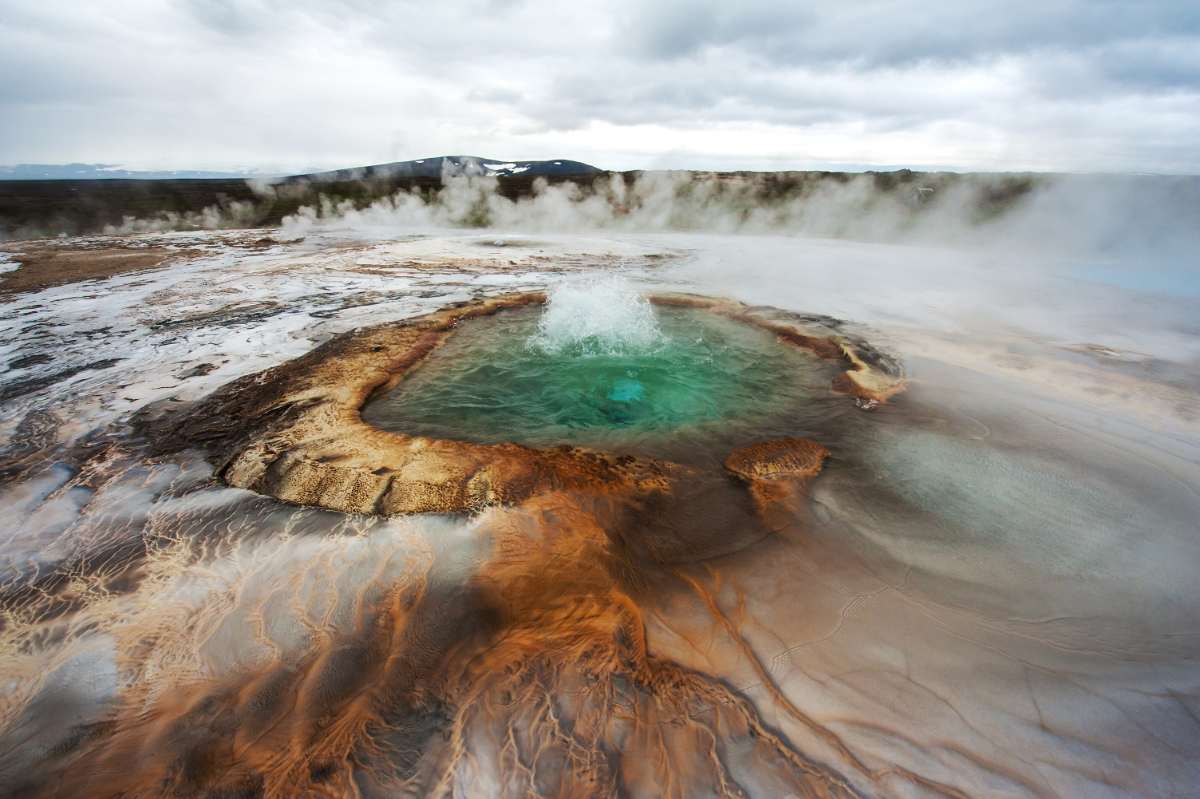
Geysir Geothermal Area is a Phenomenon for All
Whether you come to take on the challenge of getting the perfect photography shot. Or you come from an angle of serious geological interest or simply the fact that you just think boiling water hurled meters into the sky is cool – Geysir and its surrounding geyser family members at the Geysir Geothermal Area will not disappoint. So, what are you waiting for? Book that flight, get out on the open road – destination Geysir!


 By
By


